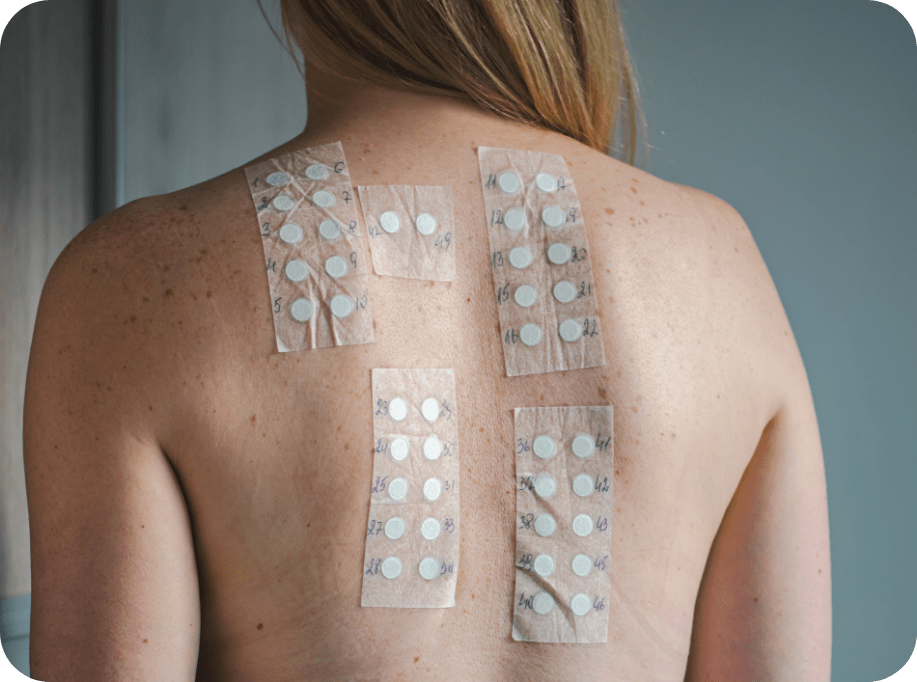

What is Patch Testing?
Patch testing in NJ and NY is a diagnostic method used by healthcare providers to identify substances that may be causing skin allergies. During the process, small amounts of various substances, such as common allergens or chemicals, are applied to patches that are then placed on the skin. The patches are typically left in place for a specified period, allowing for the observation of any skin reactions.
This testing is particularly helpful in uncovering contact allergies, which are reactions that occur when the skin comes into direct contact with certain substances. By identifying these triggers, healthcare professionals can develop targeted treatment plans to alleviate symptoms and improve the quality of life for individuals with skin allergies. Patch testing is a valuable tool that aids in the personalized management of skin conditions.
Our Patch Testing Process
Conditions We Can Diagnose Through a Patch Test in NJ & NY
Patch Testing FAQs
How long does Patch Testing take?
Patch Testing lasts for a specific period, usually 48 hours, during which your skin is exposed to potential allergens. After this period, your provider will remove the patches and examine your skin for reactions, which can include redness or inflammation. These results help identify the allergens responsible for skin allergies and inform personalized treatment plans for effective management.
What types of substances are typically tested during a patch test?
During Patch Testing, your skin may be exposed to several types of substances that can cause dermatitis, including but not limited to nickel, fragrances, and preservatives.
Can individuals continue with their regular activities during a patch test, or are there limitations on physical activities?
During a Patch Test, your provider will advise you to limit certain activities that will cause your patches to move or cause you to sweat such as bathing or exercising.

